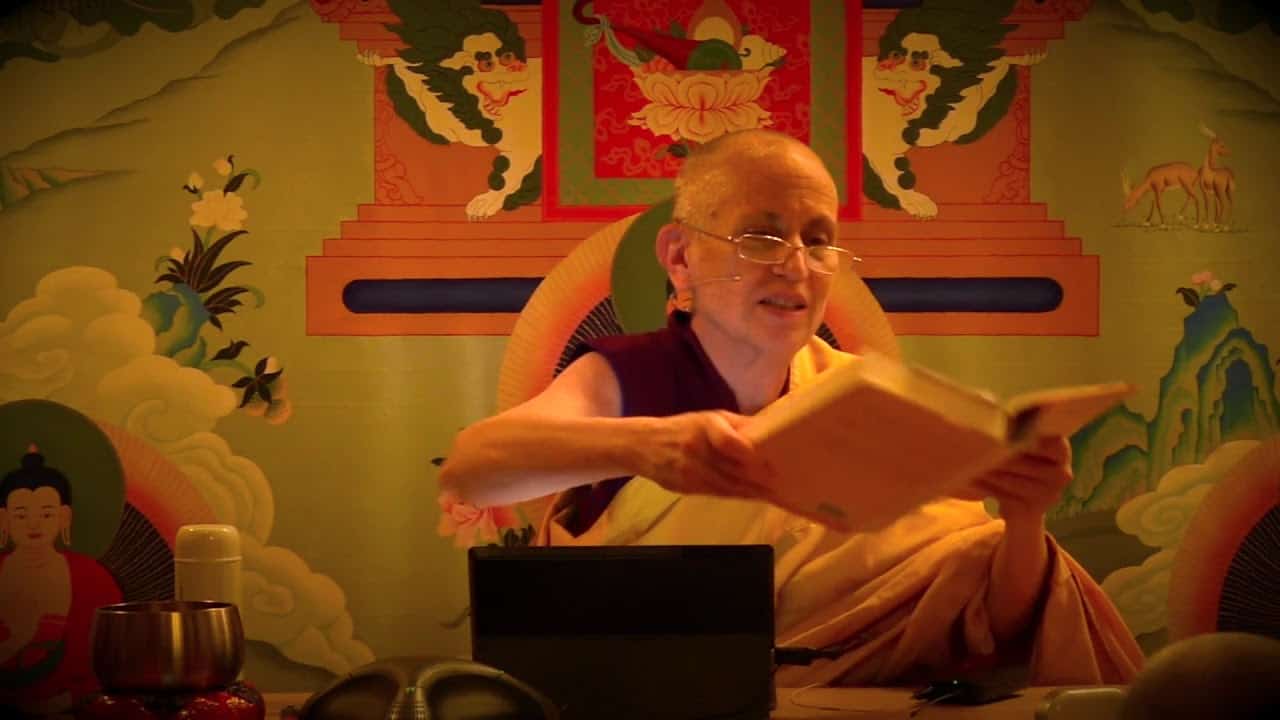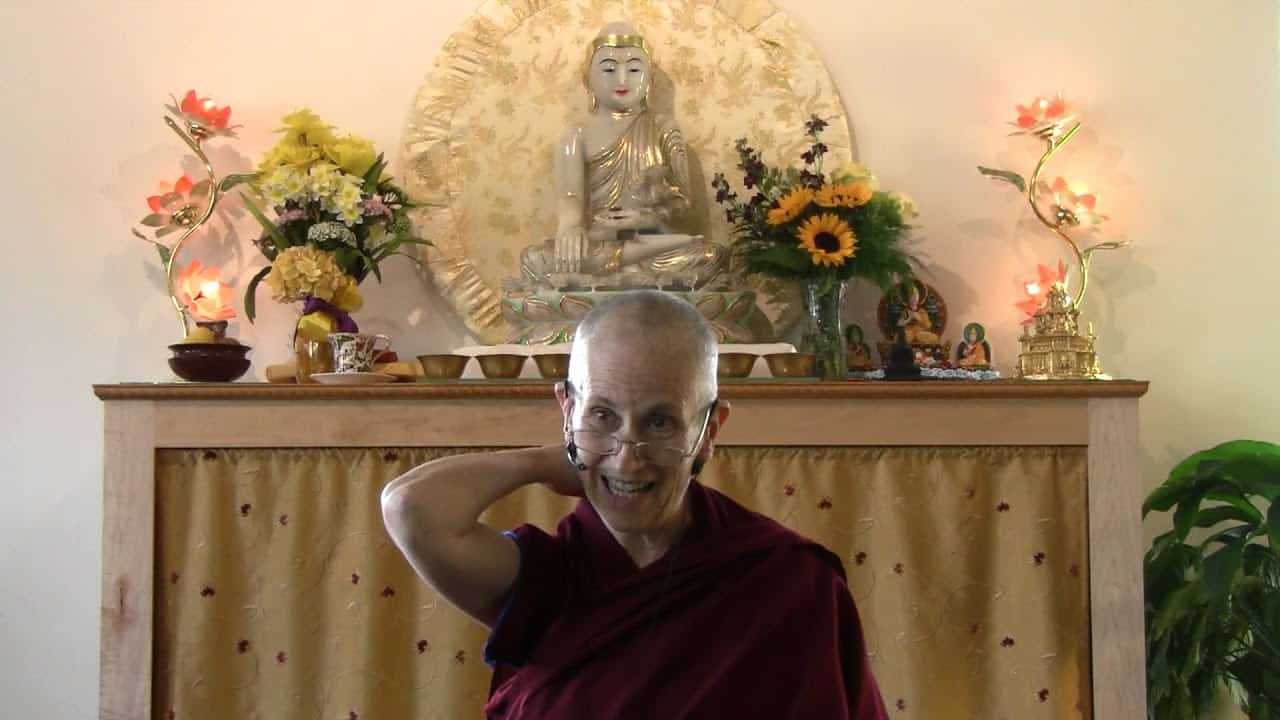Objects of meditation: Pali tradition
Objects of meditation: Pali tradition
The text turns to training the mind on the stages of the path of advanced level practitioners. Part of a series of teachings on the Gomchen Lamrim by Gomchen Ngawang Drakpa. Visit Gomchen Lamrim Study Guide for a full list of contemplation points for the series.
- Categories of meditation objects from the Pali tradition
- How to structure a meditation session
- The three signs including preliminary work, learning, and counterpart
- Suppression of hindrances to concentration
- Overcoming sensual desire and malice
Gomchen Lamrim 112: Objects of Meditation Pali Tradition (download)
Contemplation points
- What similarities and differences between the development of meditative stability in the Pali tradition (from this week) and the Sanskrit tradition (from last week) stood out for you and why? What inspiration and/or confidence in the path can you draw from this?
- Consider the preliminary steps to cultivating meditative stability: fully dedicating your life to the Buddha, going to your meditation place, setting a good motivation, asking your mentor to select a meditation object for you, reviewing the disadvantages of sensual desire and cultivating renunciation and the determination to be free. Why is each step important? How does it benefit your practice and facilitate the cultivation of meditative stability?
- Consider the gradual progression of the 3 signs (preliminary work sign to learning sign to counterpart sign). Imagine reaching each step. How might each step aid your own practice? How might it allow you to benefit others? Why is it so important to remember your motivation at this point and not mistake the peace that is the suppression of the manifest affiliations with liberation?
- Consider the first of the five hindrances: sensual desire. Venerable Chodron quoted a text that describes being attached to it as a “burning heat that dries up all bliss,” like “a bird snared in a net,” like “one who licks a honey-smeared blade.” Why is this the case? Think of specific examples in which it has been a hindrance to your own meditation practice in these ways. Why is the thought that “if I don’t follow my sensual desire, I won’t be happy” not true? What can you do to counter sensual desire (what are some antidotes you can apply when you notice it arise in your mind)?
- Consider the second of the five hindrances: malice. Venerable Chodron said this is the mind that perpetually finds faults in the world around us. It makes us totally miserable and yet we hold onto our malice. It steals our virtue, leads to unfortunate rebirths, and makes us lose the Dharma. How have you seen malice operate in your own life, both on and off the cushion? Why is this such a hindrance to concentration? What are the antidotes you can apply to counter the mind of malice?
Venerable Thubten Chodron
Venerable Chodron emphasizes the practical application of Buddha’s teachings in our daily lives and is especially skilled at explaining them in ways easily understood and practiced by Westerners. She is well known for her warm, humorous, and lucid teachings. She was ordained as a Buddhist nun in 1977 by Kyabje Ling Rinpoche in Dharamsala, India, and in 1986 she received bhikshuni (full) ordination in Taiwan. Read her full bio.


